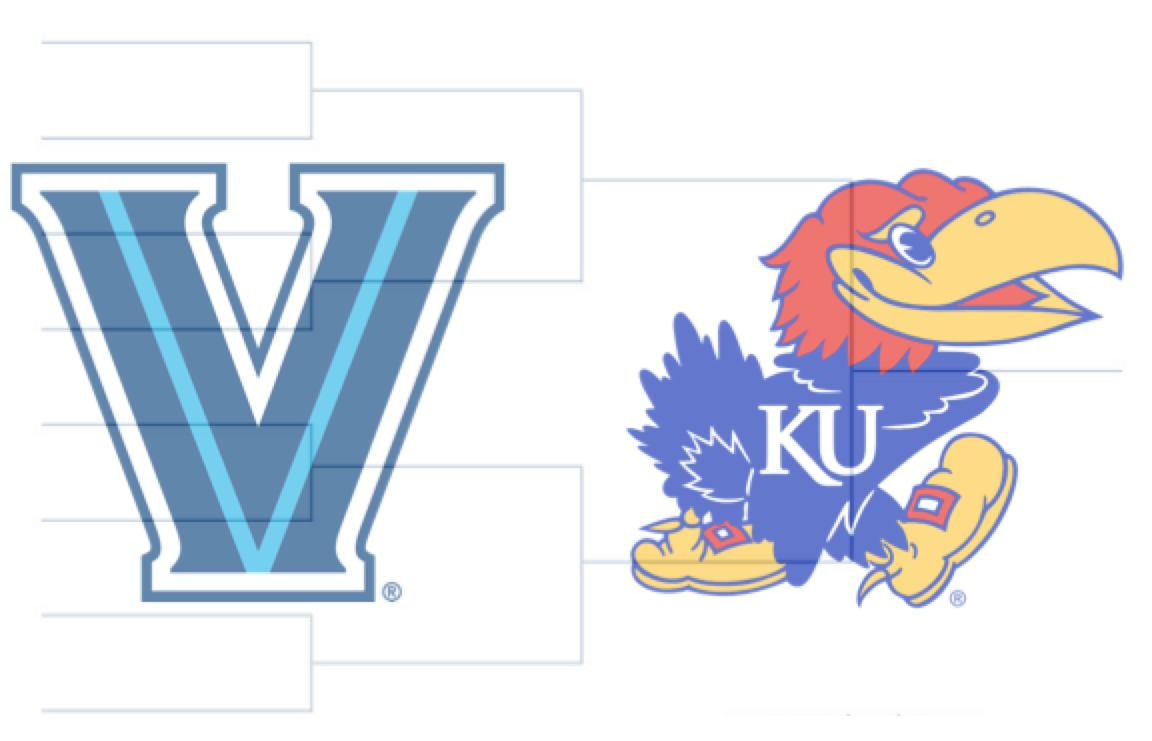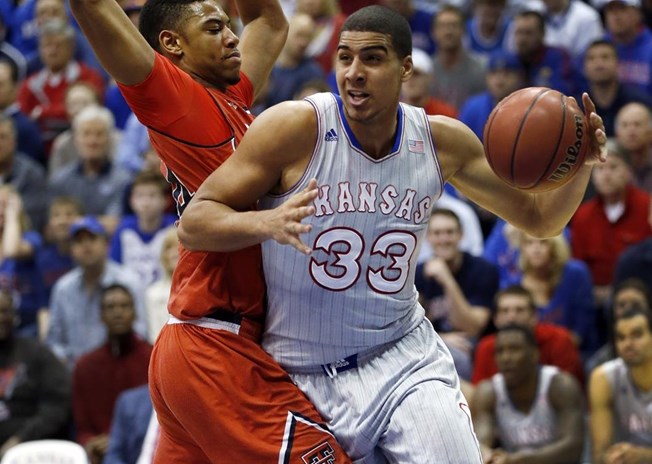Kansas’ Season Ends in the Elite Eight: What Went Wrong?
On Saturday night, the Kansas Jayhawks’ terrific season ended one stop short of Houston with a 64-59 loss to Villanova in the Elite Eight. It was an ending that few fans saw coming, but the causes of the loss are very clear.
Offensively, Saturday’s regional final was the last thing everyone expected between two of the country’s top-10 offenses in points per game. The Wildcats had their lowest-scoring game since January. The 59 points scored by KU are the fewest it has put up in a single game since December 2014, a span of 63 contests.
Villanova averaged 11 made three-pointers in its first three NCAA tournament games. Against Kansas, it made just four. The Wildcats were held to 40% from the floor and 22% from three. Despite playing its worst offensive game of the season, the Jayhawks had more field goals, assists, and rebounds than their opponent.
However, that doesn’t do justice for how badly Villanova’s defense screwed up Kansas on Saturday night. For the first time since his freshman year, Perry Ellis was a total non-factor in a college basketball game. Every time he touched the ball, two defenders swarmed in between him in the basket, put their hands up, and blocked any path to the lane that he had. Kansas’ coaching staff loves setting up Ellis to work one-on-one in the paint, where he can use his classic drive-and-spin-move to get a high-percentage shot. It flat out didn’t work against Villanova, as he was held to just one made field goal and four points. The last time Ellis scored fewer than four points? The round of 32…of Ellis’ freshman year. He wasn’t even starting yet. That was 110 games ago.
Stopping Perry Ellis is one of the most difficult assignments in college basketball. He’s more athletic than most power forwards, so matching the combination of his size and versatility is very hard. If a 6’11” center is assigned to him, he’ll blow by him in isolation. If a shorter, more athletic defender is put on him, he’ll use his size to bully his way into the paint and thrive off of free throws. Some teams elect to “give him his” by letting him score his 15-20 points, instead focusing on shutting down Kansas’ other offensive threats. Other teams choose to focus on containing Ellis first, which is a risky business. Most of them are unsuccessful, and the results are Ellis pulling out new moves to bust scouting reports while his teammates rain in perimeter shots.
This is why Kansas had been so successful this year. Ellis had only had one game in which he was unsuccessful from the floor, back on November 25 against Vanderbilt. The length of the Commodores bothered Ellis greatly (he was 1/8 from the floor with just five points), but they freed up too much to the Jayhawks on the perimeter, as Kansas drained eight threes and Wayne Selden poured in 25 points. Kansas’ ability to beat its opponents in so many different ways made fans confident that it would be able to triumph even in the event of a bad night from Ellis. Villanova proved once and for all that when Ellis is taken out of the game, the Jayhawks become just another offensive team.
It wasn’t just Ellis that the Wildcats defended masterfully. Selden, a 40% three-point shooter, went 0/6. Frank Mason, who shoots 38% from deep, was 1/6. Other than Devonte’ Graham, who was 5/9 from three, no Jayhawk could get any jump shot to fall. Villanova played havoc defense to take Ellis out of the game, and it defended the perimeter well enough to keep Kansas of its game from three-point range. Combine that with a bit of luck, as when the Jayhawks would get a rare open jumper, they would miss, and the tournament’s top offense was suddenly in big trouble.
Converting at the free-throw line was an enormous factor. 7/11 (64%) isn’t a terrible line, but it was the Jayhawks’ worst game mark in the tournament. The team missed the front end of two one-and-ones. As Villanova clinged to a slim lead in what was basically a road environment, it needed to make every free throw to hold off the top-seeded Jayhawks, and it did exactly that. The Wildcats’ 18/19 (95%) at the free throw line, including 12 straight makes to end the game, ruined any chance the Jayhawks had to get over the hump.
Another key factor was the contributions, or lack thereof, from the bench. All season, fans and experts lauded the Jayhawks’ depth. In addition to boasting one of the best starting fives in college basketball, Kansas had another seven players that averaged at least seven minutes per game. Depth is critical in the tournament, as teams are inevitably going to have games where the starters are tired and struggling to score. When the Jayhawks needed bench players to provide any sort of spark, they failed, as the Kansas reserves scored no points on just one shot in 19 minutes against Villanova. There were a lot of ways that fans could have envisioned Kansas losing a close tournament game, but getting no bench production was not a likely one.
Kansas had thrived in close games all year. After losing a close contest to Michigan State in November, the Jayhawks strung together 15 straight wins in games decided by 10 points or fewer. Against Villanova, every grasp the Jayhawks made to get back into the game was met with a counter-punch. The experience of the Wildcats, as well as some of the best free throw shooting in tournament history, helped eliminate the favorite to win the national championship.
Once again, a tournament that began with such high hopes ended in a upset and without a Final Four appearance. In the last eight years, the Jayhawks have been a No. 1 seed four times, a No. 2 seed three times, and a No. 3 seed once. The results of all those high seeds? One Final Four. One.
Kansas has been as consistent as any team in basketball when it comes to garnering regular season success and putting together a high-profile tournament resume. But there’s no denying that the Jayhawks have had some disappointing, premature March exits, and Saturday was just the latest.
As always, the Jayhawks will return tons of talent and project to be a top-five team to open next season. However, not making the Final Four in a year where Kansas secured the tournament’s No. 1 overall seed will sting for quite some time. Typically, the Jayhawks get burned in March when inferior opponents catch fire from three-point range. Unknown players turn into superstars against Kansas on the biggest stages, which has resulted in a handful of early tournament eliminations.
On Saturday, Villanova couldn’t buy a basket down the stretch. It didn’t need to. Its defense was too good. And because of the Jayhawks’ inability to establish one of the best interior scorers in college basketball, buy a three, make a clutch free throw, and gain contributions from the bench, a high-seeded Kansas team will be watching the Final Four at home once again.






Pingback: Big 12 Blog Network | Could Josh Jackson be the next Andrew Wiggins?
I’m not sure exactly why but this site is loading very slow for me. Is anyone else having this issue or is it a problem on my end? I’ll check back later and see if the problem still exists.